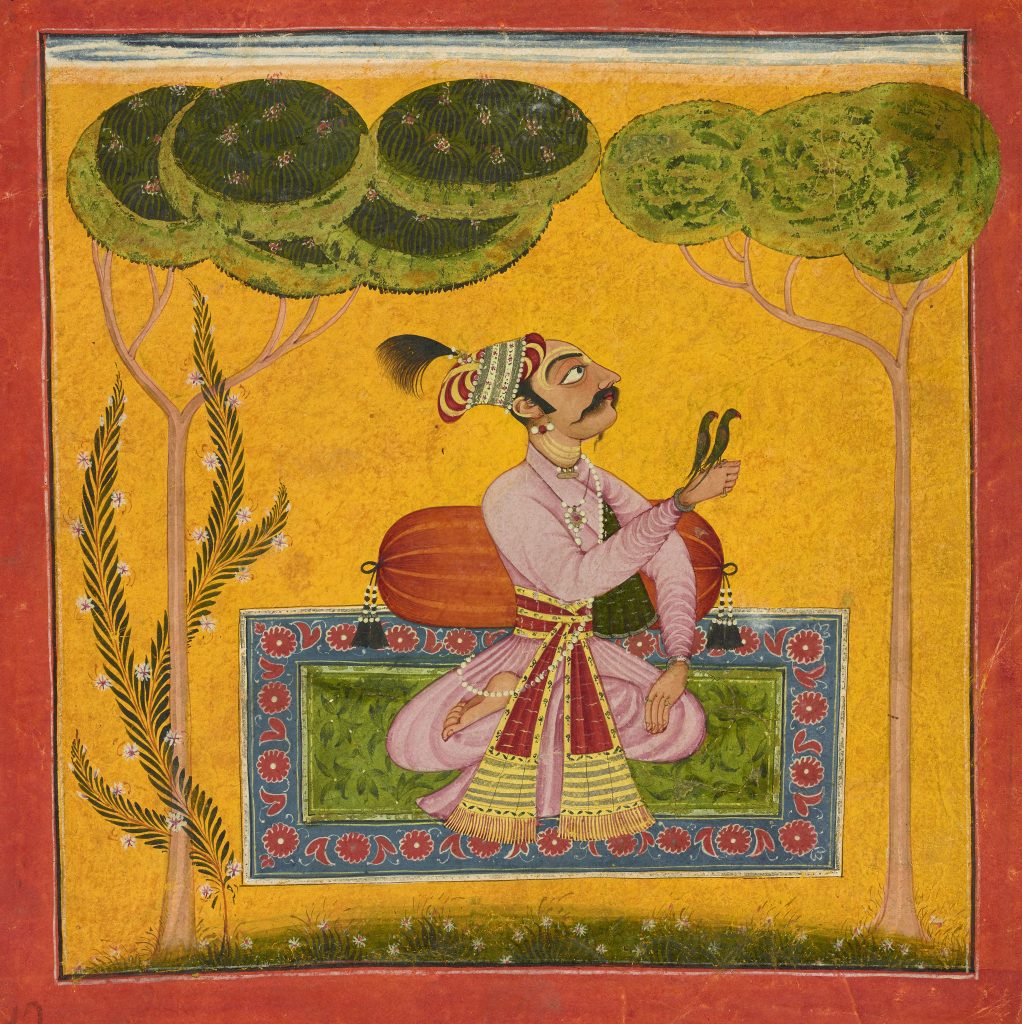Raja Mandhata
Raja Mandhata as Himal Raga
India, Himachal Pradesh, Nurpur, ca. 1690
Opaque watercolor and gold on paper
Courtesy the Freer Gallery of Art, Smithsonian Institution, Washington, D.C.: Purchase from the Catherine and Ralph Benkaim Collection — Charles Lang Freer Endowment, F2017.13.3
This luminous miniature painting is part of a ragamala series or group of raga paintings assembled as a set. It is an uncommon example wherein the subject of the painting is also the patron – Raja Mandhata. Commissioning a ragamala was a sign of one’s cultivated tastes. Patrons specified the budget, determined the size of the painting, and the quantity of gold or other expensive materials to be used. Often courts would favor a specific workshop or family of artists. Although King Mandhata is the subject of this painting, it is not just a royal portrait. Here, he is the embodiment of a musical mode, known as Himal.
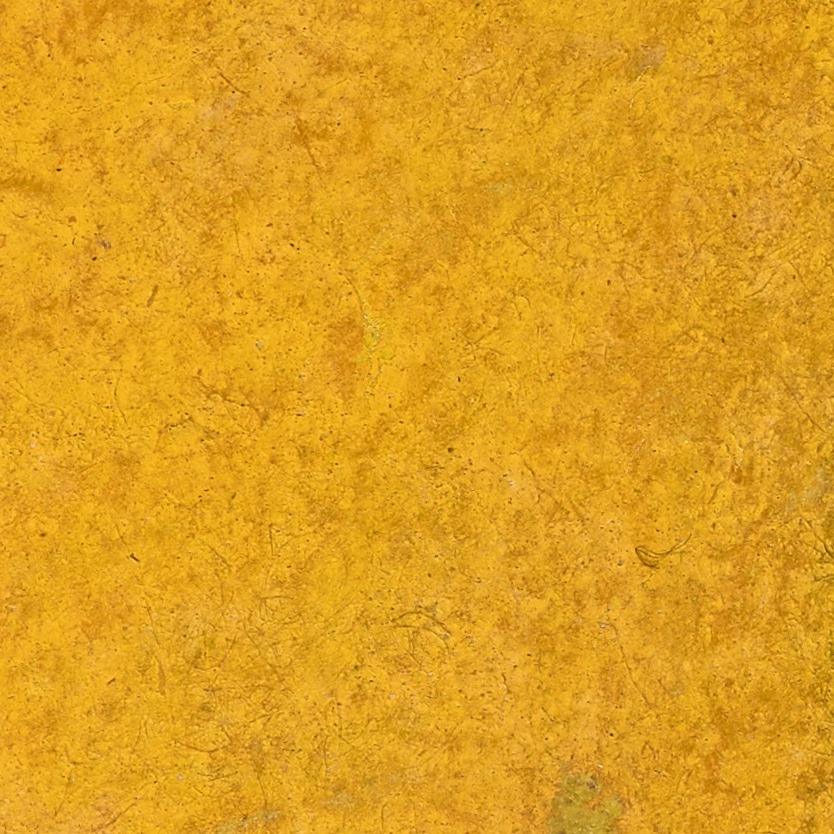
The vivid yellow paint was produced by an unusual practice. The pigment was created from a concentration of dried cow urine. The cows were fed exclusively on a diet of mango leaves in order to produce a brilliant orange yellow colored urine. This color was exported and used by his color was exported and used by artists in Europe. The recipe for this color (peori) has been lost to history and the practice of feeding cows such a restricted diet has fallen out of favor. Today, the color is created synthetically but is still called “Indian Yellow”.
Artists used subject matter and symbolism to visually express the specific mood of a musical mode. The mood of Himal Raga is romantic. Here, two parrots (most likely rose-winged parakeets) are perched on the king’s fingers, suggesting he is dreaming of his beloved. Parrots symbolize romantic love in many South Asian contexts, as they mate for life. The tall stiff tree, enveloped in curving vines, metaphorically represents a man (tree) and woman (vine) entwined in a loving embrace. The king is elegantly dressed and perfumed as he awaits his lover’s return. This is indicated by lines of sweet-smelling sandalwood paste over his eyebrows and along his neck.
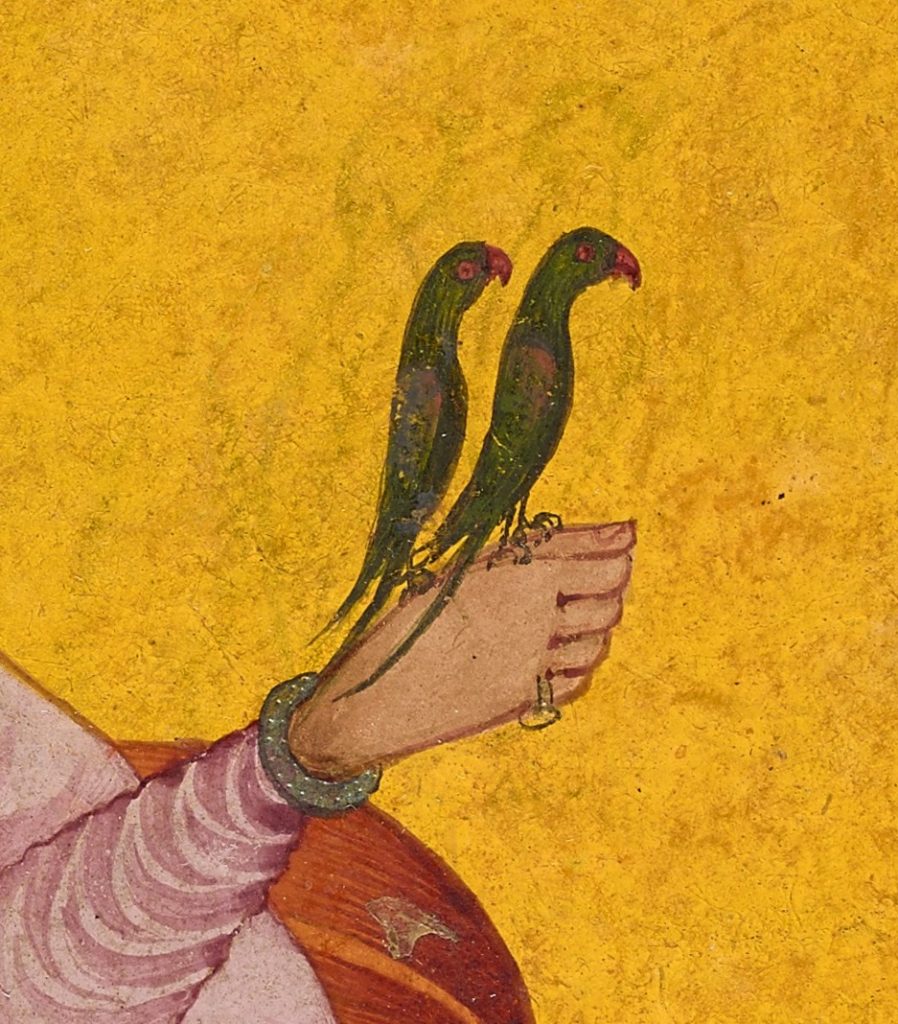
Two birds, most likely rose-winged parakeets, are perched on the king’s fingers, suggesting he is dreaming of his beloved. This type of parakeet mates for life and therefore symbolize romantic love in many South Asian contexts.
Court painters of the Nurpur tradition favored stylized forms rather than naturalistic representations. Even in portraits, artists emphasized culturally accepted indications of physical beauty and royalty rather than personal, physiognomic characteristics. The vibrant background is a flat shape, which helps to illuminate the intricate details and stylized elements of the painting.
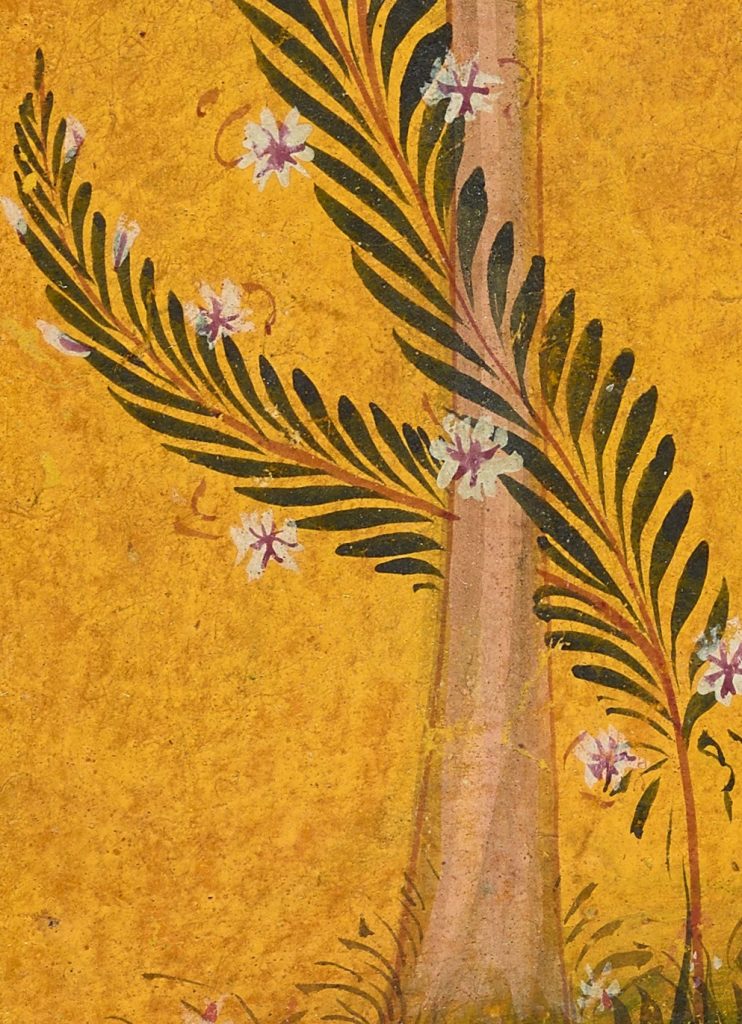
The tree encircled by a vine is a common motif used to symbolize a romantic union between a man and a woman. The tall, stiff tree represents man, and the curved vine, represents woman – entwined in a loving embrace.
Nurpur, located in what is now the Indian state of Himachal Pradesh, was a princely state ruled by the Panthania clan of Rajputs for more than eight centuries. Raja Mandhata ruled Nurpur from 1661-1770.
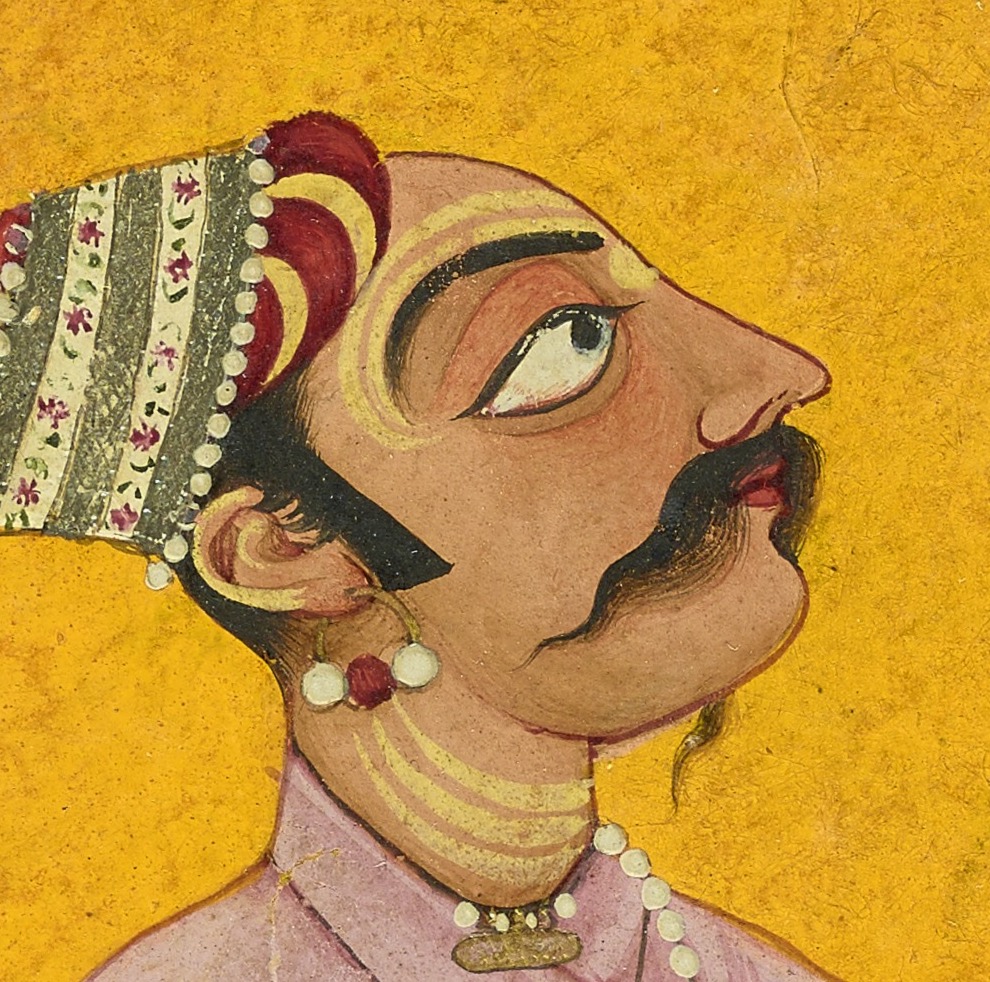
The king is dressed and smelling great as he awaits his lover’s return. The marks around his eyes and neck are made of sweet- smelling sandalwood paste.
